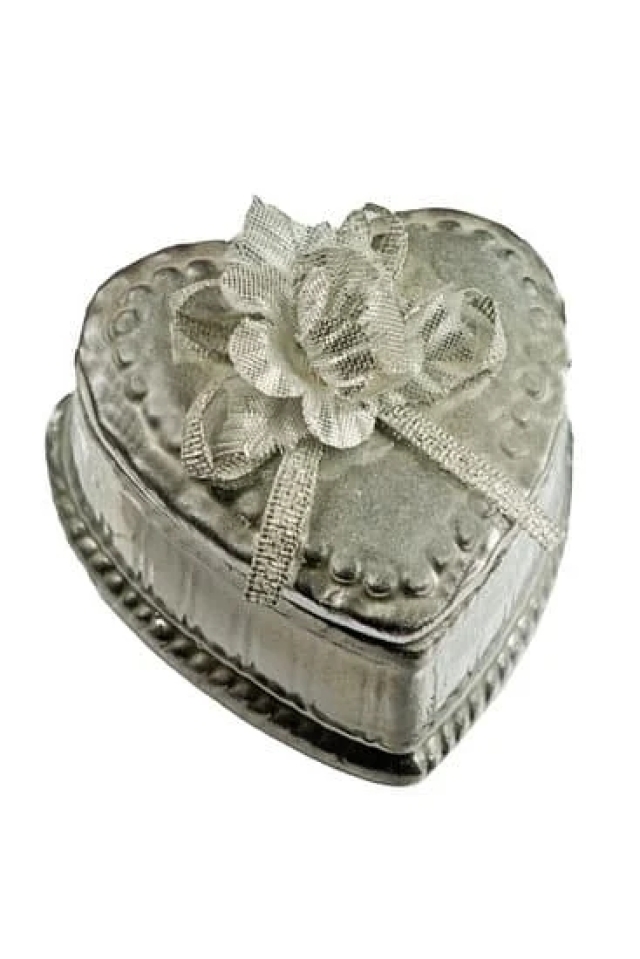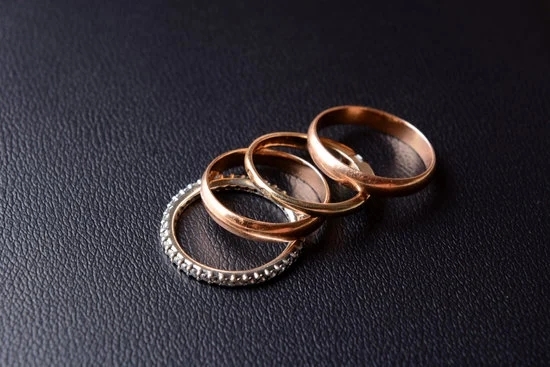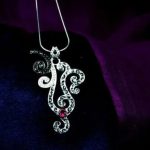When it comes to jewelry making, the types of materials required can be broken down into two categories: those that are used for constructing the jewelry and those that are used for decorative enhancements. Whether you’re looking to construct earrings, a necklace, or a bracelet, there’s a range of material needed to complete each intricate design.
Common jewelry making materials include metal wire, beads, gems, precious stones, synthetic materials like plastic and silicone-made items such as spacers or charms as well as a variety of tools such as pliers and files.
Starting with the metallic components needed for crafting jewelry, silver and gold are some of the more popular choices due to their malleability and value. Silver is arguably one of the most diverse metals in terms of craftmanship; it’s lightweight but strong enough to hold components like beads while its bright colour makes it an ideal choice when mixing in accent pieces.
Gold isn’t normally mixed in with other colors because its classic yellow tone allows you to create attractive designs with minimal effort. Base metals such as copper or brass may also be used but they need special techniques to keep them vibrant and long-lasting.
For decorative elements within your pieces, beads are prevelant for creating texture or further color; Czech glass beads come in an array of shapes sizes which allows users the freedom to experiment on an endless array of looks. Synthetic materials like crystal powders can add sparkle and Swarovski crystal elements offer exquisite results when added onto pendants or focal pieces within bracelets or necklaces.
Genuine gemstones have become increasingly sought after because they can elevate a piece from ordinary to extraordinary; onyx for example give vibrancy against gold while sapphires traditionally combine better with silver settings. Last but not least is freshwater pearls which have been steadily rising in popularity due their delicate luminous look when scattered across beadweaved designs.
Overall, knowing what kind of material is required for jewelry making is essential before starting any project especially if the goal is designing relatively complex pieces where multiple components and techniques come into play.
Essential Jewellery Making Tools and Supplies
Jewellery making is an enjoyable, creative and rewarding craft hobby. To begin exploring your own style of jewellery making, there is a specific set of materials and tools which you first need to acquire.
Beads
Beads are the most obvious material when it comes to making jewelry and these can vary from gemstones, glass beads, semi-precious stones, crystals, as well as bead mixes for those who are just beginning their exploration into creating jewelry pieces. Each type of bead has its own unique size and shape and can be made from a range of different materials such as metal or plastic.
You can also find different styles of beading looms that can help you get creative with the design possibilities when it comes to arranging your beads into patterns.
Finding Materials
If you’re looking for additional materials to give you more space to explore your creativity further, there is no shortage of places to purchase these items from. Of course, it might be best to start off by visiting a local craft store or jewelry supplier in order to get an overview of what materials are available at that particular shop.
However if this is your first foray into the world of jewelry making then online outlets may offer bundles or kits that provide a much wider selection than would be found in any one shop. Many online retailers also offer various tutorials which can aid those new to jewelry crafting in picking up techniques and strategies quickly and with minimal hassle.
Needle Nose Pliers
Needle nose pliers are quite essential when creating jewelry pieces. They come in many sizes so depending on what type of jewels you intend on creating will determine which kind you may need for certain projects. These pliers generally feature a delicate neck ideal for reaching tight spaces that may require close attention when closing spring clasps or reattaching jump rings onto beaded components etc after they have been manipulated during construction – all key elements when creating professional looking pieces.
Gold and Silver
Picking the right metal is a critical step in jewelry making. A metal’s composition, color, malleability, and shine all factor into what makes it suitable for particular projects. Gold and silver are two of the most commonly used metals in jewelry craft, and understanding the difference between them is key to making an informed decision.
Gold
Gold is incredibly well-suited for use in jewelry due to its properties. Known for being noncorrosive and durable, gold can be fashioned into various shapes with ease. Gold can also come in a variety of colors that range from yellow to white and pink, giving it so many different options when it comes to designing pieces of jewelry. Furthermore gold alloys can be produced by combining pure gold with other metals which further increases its versatility.
When it comes to grading gold, there are three main standard scales; 10K, 14K,and 18K. This refers to the proportion of pure gold contained within the alloy of each grade:
- 10K contains 10 parts pure gold and 14 parts alloy
- 14K contains 14 parts pure gold and 10 parts alloy
- 18K contains 18 parts pure Gold and 6 parts alloy
Silver
Similar to gold, silver is also highly valued as a material in jewelry making due to its attractive luster and malleability. Nonetheless silver has quite a few distinct notable qualities that make it stand out from the crowd – it has an incredible shine that gives off a beautiful reflection when exposed to light – as well as being known for removing bacterial infections by eradicating them on contact (antibacterial).
Silver often requires some maintenance such polishing or buffing however these tasks are not hard or complicated like those required by more intricate pieces crafted from harder materials such as platinum or titanium.
Silver also has two basic grades; sterling silver which consists of 92%silver combined with 8% copper ;and fine silver which contains 99 % silver with 1 % other metal like copper ore zinc.
Furthermore sterling silver allows designers more flexibility during crafting process since items created out of this grade will mold easier than items crafted from fine silver.However due to silvers impressive shine,designers creating rings out of this metal need note that too much force might cause visible dents on its surface.
Gemstones
When it comes to creating beautiful jewelry pieces, an essential ingredient is a selection of gemstones. Gemstones are vibrant and durable enough to withstand everyday wear. To get the best quality and most attractive gemstones for your design, here are some tips on what to look out for:
- Hardness – Gemstones with higher Mohs hardness ratings, like sapphires and rubies tend to be more scratch resistant than softer stones such as opals.
- Color – Assess the clarity of the stone. For example, deep blue sapphires can have a milky or cloudy effect in them if not cut properly.
- Carats – The total weight of your finished piece should influence the size of stone you choose. Check that each stone carries sufficient weight.
It is important to bear in mind that all gemstones come in different shapes and sizes. It is recommended that one visits a reputable lapidary or gem dealer when looking for stones for their jewelry project so one can get professional advice on selecting the best type of stones. Investing in quality stones will deliver maximum impact and ensure your designs last longer displays of our craftsmanship.
Another factor to consider is how the gemstone will interact with other components of the jewelery setting. Some settings, especially pronged ones requiring precision, may only work with stones cut to very exact measurements. In these cases, it’s best to work with bespoke suppliers who provide custom cuts according to individual design specifications.
Aside from sourcing high-quality gemstones, another point to consider when selecting stones is their overall value. For many entrepreneurs in this industry, understanding cost versus return can ensure that investments remain profitable By arming yourself with plenty of information about current market prices and popular trends in gemstone types will ensure you stay competitive when choosing your supplies.
Plastics, Resins, and Other Non-Metal Options
The first material many people think of for jewelry making is metal. However, there are plenty of other options for budding jewelry makers and craftspeople. There are a variety of plastics and resins that can be used to create beautiful custom pieces.
A popular option for jewelry making is acrylics. Acrylics have both lightweight and strong properties, so they are well suited for complex creations. In addition, most shapes come in muted colors or with designs already printed on them. This makes it easy to add customized detail to your pieces without any additional work.
Polymer clays are another great option for creative projects. These clays can be easily molded and shaped into just about any design you can imagine. They come in various colors, as well as neutral tones like browns and grays that can help to produce a more natural look.
Polymer clay also takes much less time to cure than ceramic-based clays, meaning your pieces will be ready faster. Plus, since polymer clay isn’t super fragile during the curing process, you can stack or store multiple creations at once without worrying about them breaking.
Finally, resin is also an excellent material choice for creating custom jewelry pieces. Resin comes in either liquid or powder form; the powder version typically cures faster than the liquid version and offers more stability when creating detailed molds or intricate designs. Plus it allows artisans to mix their own shades and colors easily – just by adding a little bit of pearl powder or mica flakes into the mix.
- Acrylics
- Polymer Clay
- Resin (liquid or powder)
- Pearl Powder
- Mica Flakes
An Overview of Popular Metals for Jewelry Making
When it comes to making jewelry, the type of metal used is a major factor in determining the look and feel of the final piece. There are truly an abundance of different metals and alloys available to create stunning and unique pieces. This article will aim to provide a brief overview of some of the most popular metals used for jewelry making.
ul
Gold: Gold is unarguably one of the most popular materials when it comes to creating ornamental pieces. Pure gold-or 24-karat gold-is incredibly soft and malleable, making it difficult to work with directly on its own.
As such, 18K and 14K gold are more likely choices as they contain alloy metals that help increase its hardness and durability while still offering a striking golden hue. For those seeking something even more budget friendly, 10K or 9K gold will also be available at lower prices.
Silver: Silver jewelry can also come in a variety of grades, ranging from fine silver-known as sterling silver-which consist of 92.5% silver mixed with 7.5% copper or another metal alloy; down to lower quality alternative silver alloys such as Britannia silver containing 95% pure silver and 5% copper. Although less durable than gold, sterling silver still offers good scratch resistance that makes them suitable for everyday wear jewelry pieces.
The silver component itself adds a beautiful shine and luster that makes them an attractive choice for many types of crafts and jewelry designs.
Platinum: Platinum has long been revered as one of the rarest and most precious metals in existence due to its superb hardness, durability, low reactivity against skin allergies, and beautiful natural white coloration without having to include any pigments or other coloring agents during manufacturing process.
To give an idea about how much stronger platinum is than gold, 18K gold has been found to be four times softer than platinum – making platinum ideal for crafting into intricate details on fine pieces without fear of scratches or warping over time from wearings like higher grade gold would experience otherwise.
Other Natural Materials Used for Jewellery Making
Apart from precious metals, there are many other materials that can be used and combined with silver and gold for jewellery making. Here is a list of some of the most popular materials used in jewelry making:
- Gemstones – these include rubies, emeralds, sapphires and diamonds.
- Pearls – these can be freshwater or saltwater pearls.
- Crystals – the use of crystals adds texture and colour to jewellery.
- Glass Beads – these come in a vast array of shapes, sizes and colours.
- Wood – wooden beads, driftwood and branches look unique when used for jewellery making.
Organic materials such as feathers, shells, fur and bone are also frequently used in jewelry making to give it an interesting vibe. For example some jewelry makers use different feathers to create statement pieces while others combine wood with chunks of rock for an unconventional yet bold combination.
In addition to this, leather has proven to be very popular over recent years due to its versatility and range of colours that are available. It is also commonly used in curved necklaces or on bangle designs where it is knotted into intricate patterns.
Nylon thread is also frequently used because it produces strong results that will last much longer than many other types of cord or twine. Jewelry makers who prefer more unusual items have been known to experiment with objects such as bicycle spoke nipples when creating particularly intricate metal workpieces. However one must always be aware of any safety issues when using hardware items or other potentially dangerous elements in designs such as these.
Alternative Methods of Jewelry Making Using Unconventional Materials
When it comes to jewelry making, there is an abundance of materials that can be used. Most traditional jewelry making kits will include a plethora of beads, gems, stones and wires, all of which create beautiful pieces of custom jewelry. But not everyone has the means or access to acquire these items in sufficient quantities; therefore, they need alternative methods of jewelry making using unconventional materials.
Recyclable and sustainable items offer a unique way to get creative with jewelry making. One example is using cereal boxes – these can easily be manipulated into intricate shapes with just a pair of scissors and some strong glue. Newspaper ads and comic books are also great for an artsy approach to jewelry making as you can cut out words phrases or design elements wanted for your necklace or earrings.
Leading off the realm of unconventional materials for Jewelry Making is wood craft pieces; wooden blocks, hexagons, circles, decoupage paper and paint can give someone the opportunity to bring their visions alive without breaking the bank. For those feeling bolder in their artistic endeavors you could even experiment with grinding up glitter to embed within wood pieces for extra sparkle.
Finally polymer clay molds like sculpey are easy to form and come in many vibrant colors – perfect if one desires something bulkier compared to gemstones or beads but still lightweight enough for everyday wear.
If you’re looking for a more rustic approach then leather could be used as another alternative material when creating original pieces which remain stylish yet strong enough to withstand regular use – punching holes through thick leather strips (in whichever design one wishes) works well with raw brass rivets together making an extremely sturdy neck piece.
Scrap fabric such as vintage table cloths can add an antique feel whilst adding subtle patterns combined with plainer ones – buttons turn this into an eye-catching accessory where less fabric might mean an even simpler creation.
Additionally vegetable tanned leather can also be digitally printed upon enabling it become unique in both look and feel when wearing these handmade jewellery pieces proudly.

Welcome to my jewelry blog! My name is Sarah and I am the owner of this blog.
I love making jewelry and sharing my creations with others.
So whether you’re someone who loves wearing jewelry yourself or simply enjoys learning about it, be sure to check out my blog for insightful posts on everything related to this exciting topic!





